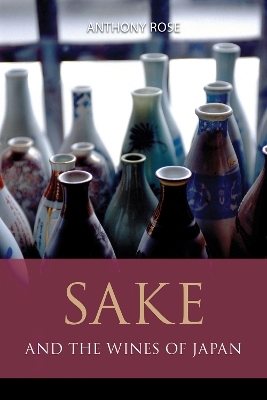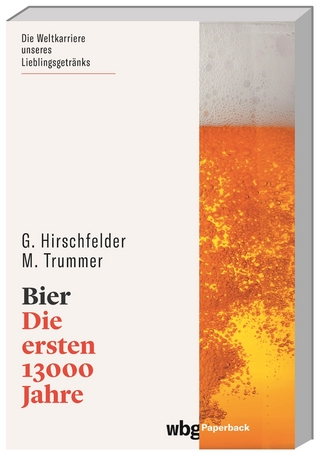
Sake and the Wines of Japan
Seiten
2024
ACADEMIE DU VIN LIBRARY LIMITED (Verlag)
978-1-913141-79-0 (ISBN)
ACADEMIE DU VIN LIBRARY LIMITED (Verlag)
978-1-913141-79-0 (ISBN)
- Titel z.Zt. nicht lieferbar
- Versandkostenfrei innerhalb Deutschlands
- Auch auf Rechnung
- Verfügbarkeit in der Filiale vor Ort prüfen
- Artikel merken
Sake, Japanese rice wine, can be confusing to the wine scholar. Anthony Rose's new book brings clarity to the subject with explanations of the history, cultural significance, brewing methods and industry structure. A thorough analysis of the wine's signature flavours follows along with detailed profiles of the most important producers.
Once brewed throughout Asia, sake has come to be inextricably linked with Japanese culture, tradition and society. In Sake and the Wines of Japan, Anthony Rose argues that, after decades in the doldrums, sake is well on its way to becoming the next big thing. Neither a wine nor a spirit, sake’s purity, centuries-old brewing methods and umami taste have gained it fans among the sort of younger drinkers who sparked the revolution in craft beers and artisan spirits. A return to quality, plus the modern outlook of today’s generation of sake makers is opening up sake, particularly premium sake, to the world. Exports have increased and sake breweries, some artisan, some offshoots of big Japanese names, have sprung up in destinations as far flung as Oregon and Australia, not forgetting England.
To demonstrate how deeply woven into Japanese society this drink is, Rose first takes us through the history of sake production, from offerings to the gods made from rice chewed by priestesses, to the heyday of sake, when master craftsmen – tōjis – were instrumental in a brewery’s success or failure, to sake’s new wave, epitomized by Berlin techno DJ Richie Hawtin, founder of ENTER.Sake. Rose then details sake types, demystifies polishing ratios, explores the issues around ageing sake and discusses how best to enjoy sake. The four basic ingredients – rice, kōji (rice mould), yeast and water – are introduced ahead of a thorough explanation of the brewing process. Rose profiles a personal selection of sake producers and ends the sake section with a chapter on sake producers outside Japan.
Japan’s wine industry is small and young but improving rapidly; here some of the best exponents are profiled alongside a history of wine production in Japan and details of grape varieties used. Sake and the wines of Japan ends with a guide to Japan, making it an essential tool for all those seeking a way into this enigmatic and enticing culture.
Once brewed throughout Asia, sake has come to be inextricably linked with Japanese culture, tradition and society. In Sake and the Wines of Japan, Anthony Rose argues that, after decades in the doldrums, sake is well on its way to becoming the next big thing. Neither a wine nor a spirit, sake’s purity, centuries-old brewing methods and umami taste have gained it fans among the sort of younger drinkers who sparked the revolution in craft beers and artisan spirits. A return to quality, plus the modern outlook of today’s generation of sake makers is opening up sake, particularly premium sake, to the world. Exports have increased and sake breweries, some artisan, some offshoots of big Japanese names, have sprung up in destinations as far flung as Oregon and Australia, not forgetting England.
To demonstrate how deeply woven into Japanese society this drink is, Rose first takes us through the history of sake production, from offerings to the gods made from rice chewed by priestesses, to the heyday of sake, when master craftsmen – tōjis – were instrumental in a brewery’s success or failure, to sake’s new wave, epitomized by Berlin techno DJ Richie Hawtin, founder of ENTER.Sake. Rose then details sake types, demystifies polishing ratios, explores the issues around ageing sake and discusses how best to enjoy sake. The four basic ingredients – rice, kōji (rice mould), yeast and water – are introduced ahead of a thorough explanation of the brewing process. Rose profiles a personal selection of sake producers and ends the sake section with a chapter on sake producers outside Japan.
Japan’s wine industry is small and young but improving rapidly; here some of the best exponents are profiled alongside a history of wine production in Japan and details of grape varieties used. Sake and the wines of Japan ends with a guide to Japan, making it an essential tool for all those seeking a way into this enigmatic and enticing culture.
Award-winning wine and sake critic Anthony Rose writes for Decanter, The World of Fine Wine, Financial Times How to Spend It online and The Oxford Companion to Wine. He is co-chair of the Australia panel at the Decanter World Wine Awards and the Sake International Challenge in Tokyo and teaches a sake consumer course at Sake No Hana in London. A founder of The Wine Gang (www.thewinegang.com), he was the wine correspondent of the print version of the Independent from start to finish (1986–2016).
| Erscheinungsdatum | 09.02.2024 |
|---|---|
| Reihe/Serie | The Classic Wine Library |
| Zusatzinfo | 65 Illustrations, black and white; 15 Illustrations, color |
| Sprache | englisch |
| Maße | 156 x 234 mm |
| Gewicht | 614 g |
| Themenwelt | Sachbuch/Ratgeber ► Essen / Trinken ► Getränke |
| ISBN-10 | 1-913141-79-9 / 1913141799 |
| ISBN-13 | 978-1-913141-79-0 / 9781913141790 |
| Zustand | Neuware |
| Informationen gemäß Produktsicherheitsverordnung (GPSR) | |
| Haben Sie eine Frage zum Produkt? |
Mehr entdecken
aus dem Bereich
aus dem Bereich
das Praxis-Handbuch für Kaffeeliebhaber, Baristas und Espresso-Fans
Buch | Hardcover (2023)
Edel Verlagsgruppe
24,99 €


